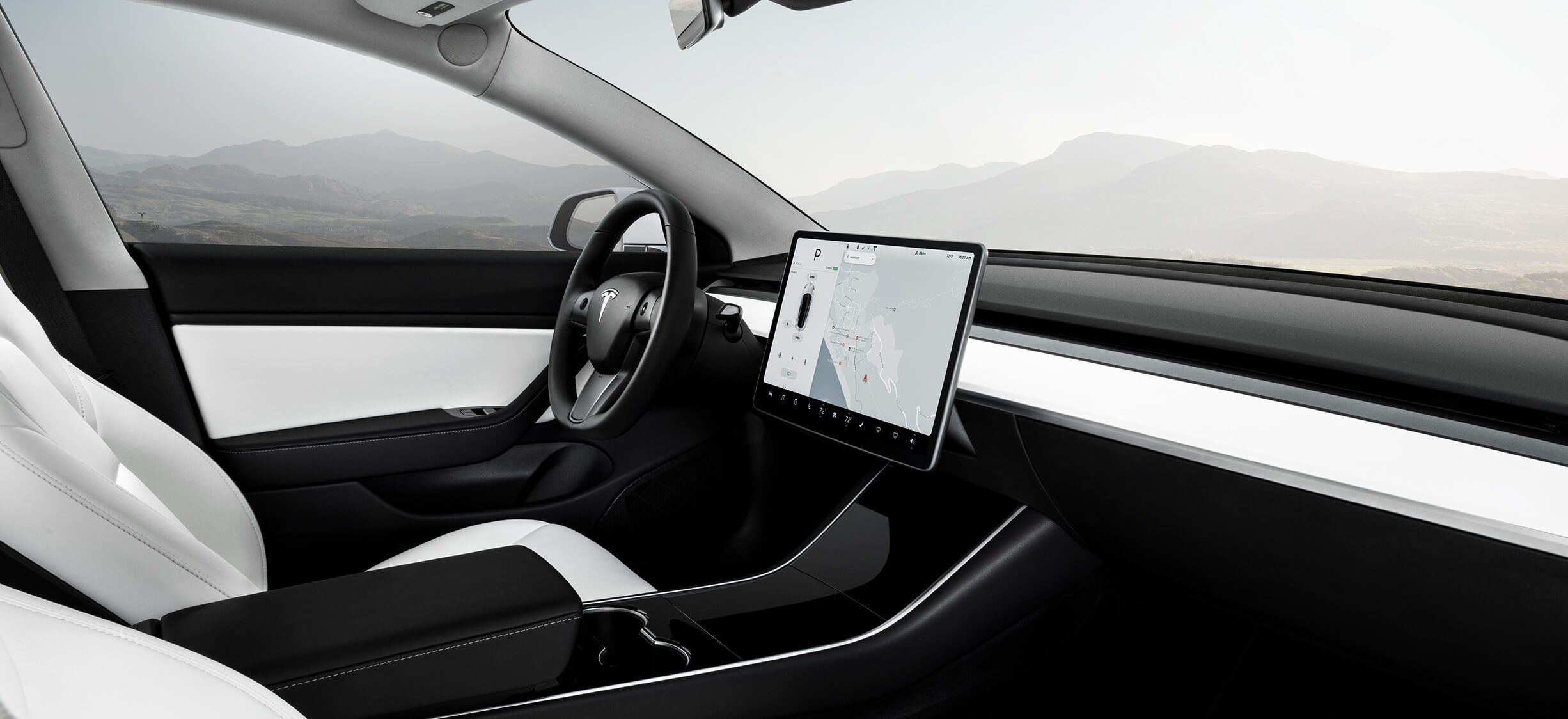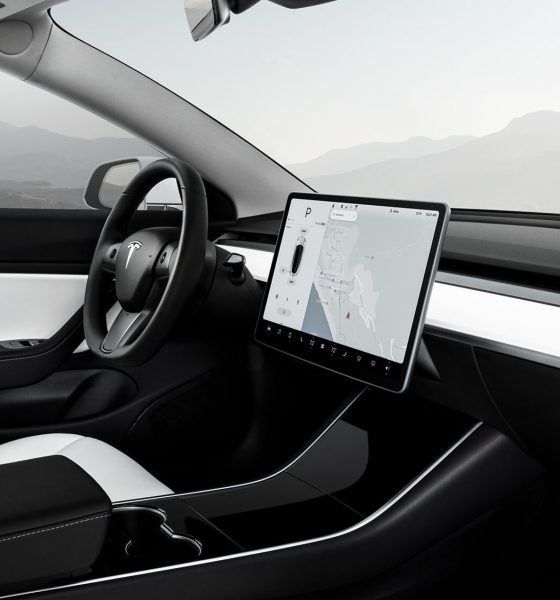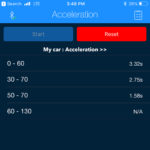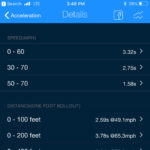

News
First Tesla Model 3 Performance VBOX test yields 0-60 mph in 3.32 seconds
The Tesla Model 3 Performance is intended to be a vehicle that is quick off the line and balanced enough to endure extended track driving.
Videos of the Model 3 Performance doing acceleration runs began to emerge online almost immediately after the company began to offer test drives in select showrooms across the US. A Model 3 Performance test drive unit from Tesla’s Costa Mesa Sales & Delivery Center in Orange County, CA was filmed doing a 0-60 mph run in 4 seconds flat while carrying four adults. More recently, Tesla owner-enthusiast Erik Strait, better known as the host of YouTube’s DÆrik channel, also shared a video showcasing the Model 3 Performance’s 0-60 mph acceleration.
Tesla enthusiast Eli of My Tesla Adventure was able to get behind the wheel of a fully stock Model 3 Performance earlier this week. Eli noted that he was able to use his VBOX, a device that measures a vehicle’s acceleration, speed, and overall stats during a specific run, when he took the Model 3 Performance for a spin. While a video is unavailable as per the electric car owner’s request, the YouTube host was able to share the data gathered by his VBOX in social media. Following are screenshots from the My Tesla Adventure host’s VBOX app on his smartphone.
- Tesla Model 3 Performance 0-60 mph VBOX data. [Credit: My Tesla Adventure/Instagram]
- Tesla Model 3 Performance 0-60 mph VBOX data. [Credit: My Tesla Adventure/Instagram]
- Tesla Model 3 Performance 0-60 mph VBOX data. [Credit: My Tesla Adventure/Instagram]
- Tesla Model 3 Performance 0-60 mph VBOX data. [Credit: My Tesla Adventure/Instagram]
The Model 3 Performance’s VBOX data during a 0-60 mph run. [Credit: My Tesla Adventure/Instagram]
As could be seen in the Model 3 Performance’s VBOX data, the electric car was able to hit the 60 mph mark in 3.32 seconds, the speed mentioned by Elon Musk when he tweeted about the vehicle’s optimum performance. According to Musk, the electric car’s 20″ Performance Wheels and Michelin Pilot Sport 4S summer tires are balanced for speed and range. Musk suggested that thicker and stickier tires at the rear of the Model 3 Performance should help the vehicle lower its 0-60 mph time to 3.3 seconds. If the recent VBOX data is any indication, however, it seems like a 3.3-second 0-60 mph run is already possible even if the vehicle is completely stock.
Tesla tends to underrate its electric cars’ performance figures. When the Long Range RWD Model 3 started making its way to reservation holders, racing enthusiasts such as Brooks of DragTimes were able to get 0-60 times in the 4.5-second range, far quicker than Tesla’s listed 0-60 time of 5.1 seconds for the vehicle. Over the past few months, however, it appears like Tesla has adjusted the Long Range RWD Model 3’s acceleration, with the sedan’s 0-60 mph performance now being more consistent to Tesla’s 5.1-second estimate. In a recent update on the r/TeslaMotors subreddit, Model 3 Dual Motor AWD owner u/Cynapse noted that his electric car showed a 0-60 mph time of 4.33 seconds with 18″ Aero Wheels. Tesla’s specs for the vehicle list a 0-60 mph time of 4.5 seconds.
During Tesla’s Q2 2018 earnings call, Tesla worldwide head of sales Robin Ren stated that orders for the Model 3 Performance and the Dual Motor AWD have been encouraging, and interest for the vehicle even among non-reservation holders remain high. With Tesla now delivering the Model 3 Performance and Dual Motor AWD to customers, it would only be a matter of time before the electric cars are analyzed by VBOX data on the track.
For now, here is a video of a Tesla Model 3 Performance doing a 0-60 mph run on a freeway as measured by Dragy, another performance-measuring device. The electric car, whose battery was at the low 80s during the run, was equipped with Tesla’s stock 18″ wheel package with Aero hubcaps off.

News
Tesla FSD fleet is nearing 7 billion total miles, including 2.5 billion city miles
As can be seen on Tesla’s official FSD webpage, vehicles equipped with the system have now navigated over 6.99 billion miles.

Tesla’s Full Self-Driving (Supervised) fleet is closing in on almost 7 billion total miles driven, as per data posted by the company on its official FSD webpage.
These figures hint at the massive scale of data fueling Tesla’s rapid FSD improvements, which have been quite notable as of late.
FSD mileage milestones
As can be seen on Tesla’s official FSD webpage, vehicles equipped with the system have now navigated over 6.99 billion miles. Tesla owner and avid FSD tester Whole Mars Catalog also shared a screenshot indicating that from the nearly 7 billion miles traveled by the FSD fleet, more than 2.5 billion miles were driven inside cities.
City miles are particularly valuable for complex urban scenarios like unprotected turns, pedestrian interactions, and traffic lights. This is also the difference-maker for FSD, as only complex solutions, such as Waymo’s self-driving taxis, operate similarly on inner-city streets. And even then, incidents such as the San Francisco blackouts have proven challenging for sensor-rich vehicles like Waymos.
Tesla’s data edge
Tesla has a number of advantages in the autonomous vehicle sector, one of which is the size of its fleet and the number of vehicles training FSD on real-world roads. Tesla’s nearly 7 billion FSD miles then allow the company to roll out updates that make its vehicles behave like they are being driven by experienced drivers, even if they are operating on their own.
So notable are Tesla’s improvements to FSD that NVIDIA Director of Robotics Jim Fan, after experiencing FSD v14, noted that the system is the first AI that passes what he described as a “Physical Turing Test.”
“Despite knowing exactly how robot learning works, I still find it magical watching the steering wheel turn by itself. First it feels surreal, next it becomes routine. Then, like the smartphone, taking it away actively hurts. This is how humanity gets rewired and glued to god-like technologies,” Fan wrote in a post on X.
News
Tesla starts showing how FSD will change lives in Europe
Local officials tested the system on narrow country roads and were impressed by FSD’s smooth, human-like driving, with some calling the service a game-changer for everyday life in areas that are far from urban centers.

Tesla has launched Europe’s first public shuttle service using Full Self-Driving (Supervised) in the rural Eifelkreis Bitburg-Prüm region of Germany, demonstrating how the technology can restore independence and mobility for people who struggle with limited transport options.
Local officials tested the system on narrow country roads and were impressed by FSD’s smooth, human-like driving, with some calling the service a game-changer for everyday life in areas that are far from urban centers.
Officials see real impact on rural residents
Arzfeld Mayor Johannes Kuhl and District Administrator Andreas Kruppert personally tested the Tesla shuttle service. This allowed them to see just how well FSD navigated winding lanes and rural roads confidently. Kruppert said, “Autonomous driving sounds like science fiction to many, but we simply see here that it works totally well in rural regions too.” Kuhl, for his part, also noted that FSD “feels like a very experienced driver.”
The pilot complements the area’s “Citizen Bus” program, which provides on-demand rides for elderly residents who can no longer drive themselves. Tesla Europe shared a video of a demonstration of the service, highlighting how FSD gives people their freedom back, even in places where public transport is not as prevalent.
What the Ministry for Economic Affairs and Transport says
Rhineland-Palatinate’s Minister Daniela Schmitt supported the project, praising the collaboration that made this “first of its kind in Europe” possible. As per the ministry, the rural rollout for the service shows FSD’s potential beyond major cities, and it delivers tangible benefits like grocery runs, doctor visits, and social connections for isolated residents.
“Reliable and flexible mobility is especially vital in rural areas. With the launch of a shuttle service using self-driving vehicles (FSD supervised) by Tesla in the Eifelkreis Bitburg-Prüm, an innovative pilot project is now getting underway that complements local community bus services. It is the first project of its kind in Europe.
“The result is a real gain for rural mobility: greater accessibility, more flexibility and tangible benefits for everyday life. A strong signal for innovation, cooperation and future-oriented mobility beyond urban centers,” the ministry wrote in a LinkedIn post.
News
Tesla China quietly posts Robotaxi-related job listing
Tesla China is currently seeking a Low Voltage Electrical Engineer to work on circuit board design for the company’s autonomous vehicles.

Tesla has posted a new job listing in Shanghai explicitly tied to its Robotaxi program, fueling speculation that the company is preparing to launch its dedicated autonomous ride-hailing service in China.
As noted in the listing, Tesla China is currently seeking a Low Voltage Electrical Engineer to work on circuit board design for the company’s autonomous vehicles.
Robotaxi-specific role
The listing, which was shared on social media platform X by industry watcher @tslaming, suggested that Tesla China is looking to fill the role urgently. The job listing itself specifically mentions that the person hired for the role will be working on the Low Voltage Hardware team, which would design the circuit boards that would serve as the nervous system of the Robotaxi.
Key tasks for the role, as indicated in the job listing, include collaboration with PCB layout, firmware, mechanical, program management, and validation teams, among other responsibilities. The role is based in Shanghai.
China Robotaxi launch
China represents a massive potential market for robotaxis, with its dense urban centers and supportive policies in select cities. Tesla has limited permission to roll out FSD in the country, though despite this, its vehicles have been hailed as among the best in the market when it comes to autonomous features. So far, at least, it appears that China supports Tesla’s FSD and Robotaxi rollout.
This was hinted at in November, when Tesla brought the Cybercab to the 8th China International Import Expo (CIIE) in Shanghai, marking the first time that the autonomous two-seater was brought to the Asia-Pacific region. The vehicle, despite not having a release date in China, received a significant amount of interest among the event’s attendees.












